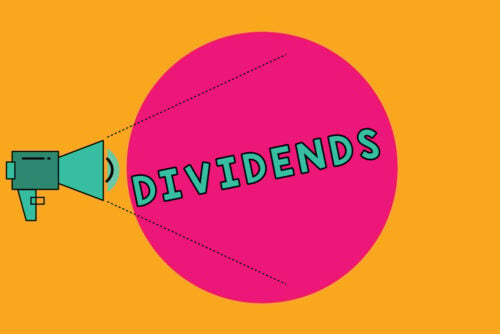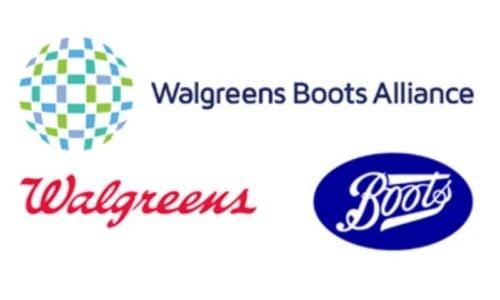During a bear market or correction, volatility tends to increase, making investors skittish. We tend to like low volatility stocks because it preserves capital. No one wants to have unrealized losses during a bear market.
Hence, investors should own some low beta dividend stocks because it adds ballast to their portfolio. Growth stocks struggle during high inflation.
Furthermore, growth stocks like Tesla do not pay dividends, and there is no cushion for total return.
Therefore, a diversified dividend stock portfolio with low volatility can reduce risk and make it easier to stomach a bear market when they are down. Below are 4 low beta dividend stocks that can benefit your portfolio during a down market.
To create our list of stocks, we screen for equities with a beta of less than 0.8 and a dividend yield of 3%+. We also desire decent dividend safety and thus a payout ratio of no more than 65%. At values higher than 65%, the risk of a dividend cut is greater.
In addition, we want stocks trading at a reasonable valuation, so we require a price-to-earnings (P/E) ratio of not more than 18X, below the average of the S&P 500 Index.

Low Beta Dividend Stocks
Verizon Communications
Verizon Communications (VZ) became increasingly popular after AT&T (T) cut its dividend. Verizon is a market leader in cellular and broadband service.
The firm has approximately 115 retail cellular customers, ~7.3 million broadband connections, of which roughly 6.6 million are FiOS customers and 28 million business connections. Total revenue was $134,325 million in the trailing twelve months.
The company’s competitive advantage is its scale. Also, it operates in an oligopoly with two other competitors for cellular service, and together they have a 90%+ market share. On the other hand, competition is fierce, and the market is mature.

However, Verizon has a low beta of about 0.34 and a high forward dividend yield of 6.25%, making it ideal for retirees. The dividend growth rate is only ~2% per annum, but the company has raised the dividend for 18 years in a row.
Verizon is cheap now, trading at a forward P/E ratio of ~8.0X, well below its 5-year and 10-year averages. As a result, Verizon is an excellent low beta stock for income portfolios.
Walgreens Boots Alliance
Walgreens Boots Alliance (WBA) is on many lists because of its low valuation and high dividend yield. Additionally, the beta is reasonably conservative at 0.62.
The company is a sizable pharmacy retail chain in the US with significant international operations. Walgreens Boots operates more than 9,000 stores in the US and 4,000 stores internationally, mainly in the UK. Total revenue was $134,516 million in the past twelve months.
The dividend yield is about 5.5%, the highest in the past decade, supported by a reasonably low payout ratio of approximately 36%. This value makes the dividend safe and leaves room for growth.

Walgreens Boots has raised the dividend at a 5.2% CAGR in the past 5-years. The company is three years away from becoming a Dividend King too.
Walgreens is ridiculously cheap based on historical earnings multiples. The stock trades at about 7.5X earnings. The primary reason is investor fears about opioid lawsuits and competition from online pharmacies.
However, the low beta, high dividend yield, low payout ratio, and dividend growth make this stock attractive.
Kellogg Company
Kellogg Company (K) is the third stock on this list of low beta dividend stocks. The global company is well-known for its breakfast cereals and other foods.
It sells brands like Rice Krispies, Kashi, Pop-Tarts, Cheez-Its, Pringles, Nutri-Grain, Morningstar Farms, Coco Pops, Eggo, etc. Total revenue was $14,578 million in the past twelve months.
As a consumer staples company, Kellogg has a low beta of 0.43 combined with an excellent dividend yield of 3.3%. The yield is below the 5-year average, but it is nearly three times the average of the S&P 500 Index.

Furthermore, the payout ratio is moderate at 56%, suggesting the dividend is safe. However, one negative is that the dividend growth rate has been minimal at approximately 2.5% in the past 5-years and is slowing.
Kellogg is not terribly undervalued, trading at an earnings multiple of ~17.1X with the 5-year and 10-year ranges.
Moreover, Kellogg is interesting because it is splitting into three businesses: snacking, cereal, and plant-based foods, but this does add to the uncertainty.
Pfizer
The last stock on this list of low beta dividend stocks is Pfizer (PFE), the pharmaceutical giant. The company has undergone a massive reorganization in the past few years, divesting the generic and consumer businesses.
These segments were placed into joint ventures that eventually became Viatris (VTRS) and GlaxoSmithKline Consumer Health. Today, Pfizer is an R&D pharmaceutical company.
Important therapies include Eliquis, Xtandi, Sutent, Inluyta, Paxlovid, Xeljanz, Enbrel, Vyndaqel/Vyndamax, Cominraty, etc. Total revenue was $101,275 million in the past twelve months.

Pfizer’s stock has a moderate beta of 0.65, making it the highest of the stocks on this list. Next, the dividend yield is circa 3.5%, slightly below the 5-year average.
However, the payout ratio is modest at 35%, leaving room for growth. The dividend has increased at a 6.9% rate in the past decade and a 5.4% CAGR in the past 5-years. Pfizer is currently a Dividend Contender with 12 consecutive years of increases.
Pfizer is another ridiculously cheap stock. The forward valuation is 7.1X earnings, about half the 5-year and 10-year ranges.
Pfizer’s success with COVID-19 vaccines and therapies has rapidly grown the top and bottom lines pushing down the valuation. The stock is suitable for those seeking low beta, a decent yield, and dividend growth at a low valuation.
Final Thoughts
Low beta dividend stocks are good ones to add to your stock portfolio because they provide downside protection in a volatile, downward-trending market.
Moreover, many of these types of stocks have above-average dividend yields generating passive income streams.
Investors seeking to live on dividends do not want significant unrealized losses on paper, and low-volatility dividend stocks are a place to look to avoid that outcome.
Disclosure: Long VZ
Disclaimer: The author is not a licensed or registered investment adviser or broker/dealer. He is not providing you with individual investment advice. Please consult with a licensed investment professional before you invest your money.
Author Bio: Prakash Kolli is the founder of the Dividend Power site. He is a self-taught investor and blogger on dividend growth stocks and financial independence. Some of his writings can be found on Seeking Alpha, InvestorPlace, Business Insider, Nasdaq, TalkMarkets, ValueWalk, The Money Show, Forbes, Yahoo Finance, and leading financial blogs. He also works as a part-time freelance equity analyst with a leading newsletter on dividend stocks. He was recently in the top 1.0% and 100 (73 out of over 13,450) financial bloggers, as tracked by TipRanks (an independent analyst tracking site) for his articles on Seeking Alpha.


 Tags:
Tags:










